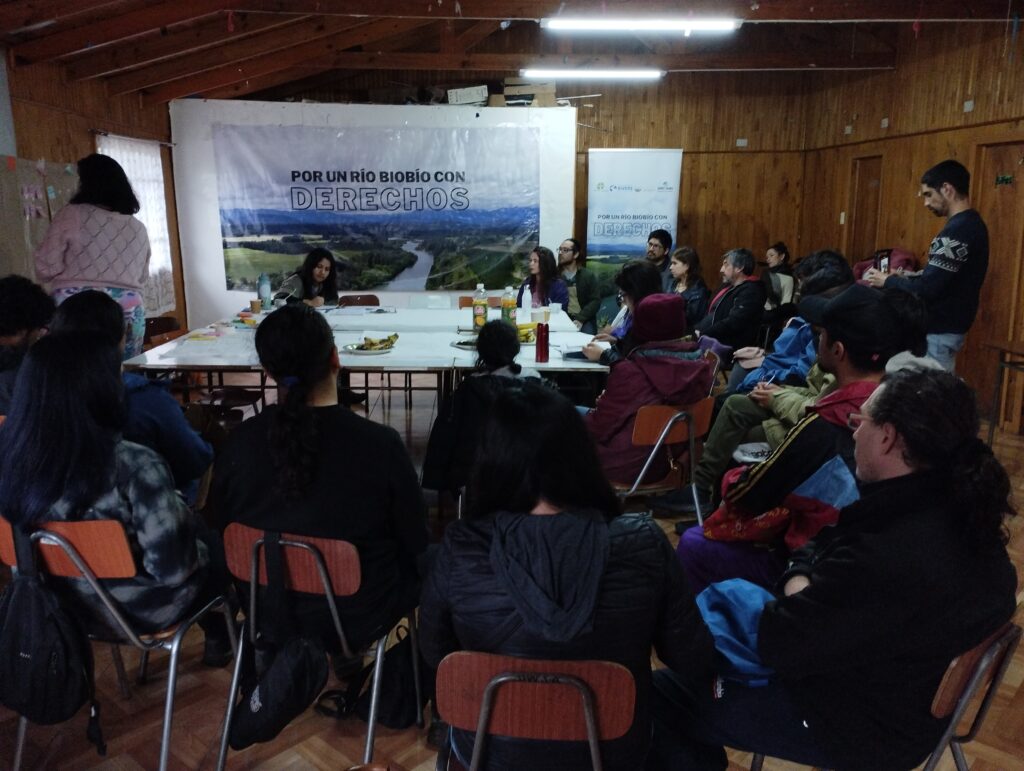The Biobío River becomes the first ecosystem in Chile to have a Declaration of Rights
After an extensive study and widespread public consultation, Biobío River basin communities, scientists, and organizations unveil a groundbreaking Declaration seeking to secure rights for Chile’s Biobío River amidst escalating environmental threats. Led by the communities of Defensa Ribera Norte Chiguayante, situated downstream on the Biobío River, and Malen Leubü, located in Alto Biobío, alongside the NGOs Defensa Ambiental, Manzana Verde, International Rivers, and Earth Law Center, this historic declaration seeks to rekindle the bond between communities and their river while safeguarding the rights of Chile’s Biobío River.
Background
The Biobío River is the second longest river in Chile and one of the most significant fluvial ecosystems in the country. It is an important biological corridor linking areas from the mountains to the sea, being essential for human consumption, food security and sovereignty, as well as in the development of economic, cultural and spiritual activities.
The Biobío River has historically suffered threats such as the construction of hydropower dams, water extraction for irrigation and urbanization, the development of infrastructure projects, water pollution and aggregate extraction, among others.
The river’s health has suffered serious and permanent damage due to these threats, weakening its connection with communities and impeding the river’s spiritual significance for Indigenous peoples, for which it is a key symbol of their cultural identity.
Why does the Biobío River need a Declaration of Rights?

Chile’s current legal framework ignores the intrinsic value of natural entities and does not emphasize sustainable development in harmony with Nature.
The Biobío River will become the first ecosystem in Chile to have a Declaration of Rights. Inspired by legislative advances in many nations regarding the permanent protection of rivers, riparian communities have come together to develop a Declaration of Rights and recognize the inherent rights of the Biobío River to exist, flow and regenerate, in order to guarantee the preservation of its ecosystem functions and the rights of present and future generations.
The Declaration is a living tool that seeks to be a mechanism for long-term visibility and advocacy for the defense and protection of the river, facilitating and promoting the participation of several local actors.
Read it. Sign it. Share it
The origin of the Declaration
The Declaration represents a joint and transversal work between many actors such as Indigenous peoples, scientists, civil society organizations, environmental activists, authorities, and the general public.



This project arose in the context of the “Somos Cuenca” festival, held in November 2023 in the towns of Concepción and Talcahuano, Chile. A series of workshops were held in Chiguayante, Concepción and Alto Biobío, generating a participatory dialogue among the attendees, who shed light on the socio-environmental problems and threats of the Biobío River and the communities along the entire length of the basin. They also testified to the importance of the link between communities and the river.
“Today signifies a pivotal moment as we introduce the Declaration of the Rights of the Biobío River. In partnership with Defensa Ribera Norte Chiguayante and Pewenches Indigenous communities, this initiative underscores our shared dedication to preserving this vital ecosystem amidst mounting destructive pressures. The well-being of the Biobío River, along with that of surrounding communities, is imperiled by the pressures imposed on its ecosystem, stemming from established dams such as Ralco, Pangue, and Angostura, as well as proposed hydro-projects and extractive activities.”
Monti Aguirre, Latin America Director at International Rivers.

Watch the Video Campaign
Feature photo: Biobío River. Credit: Isadora Armani, International Rivers
